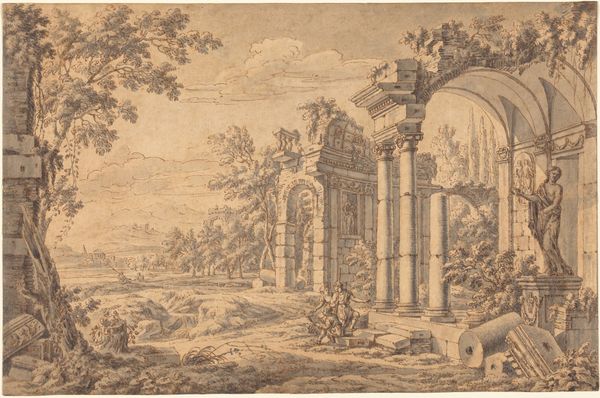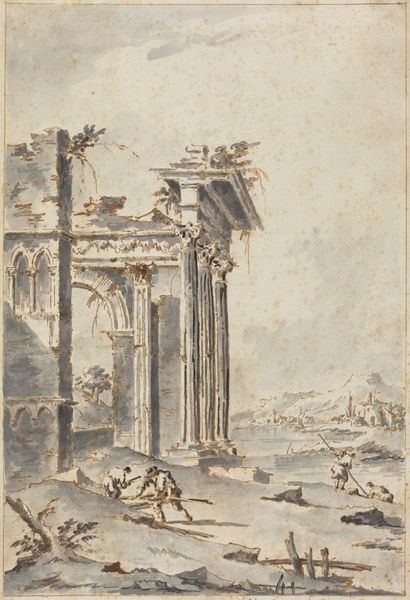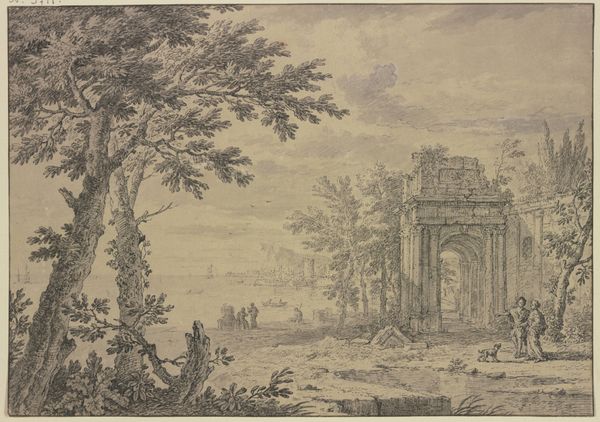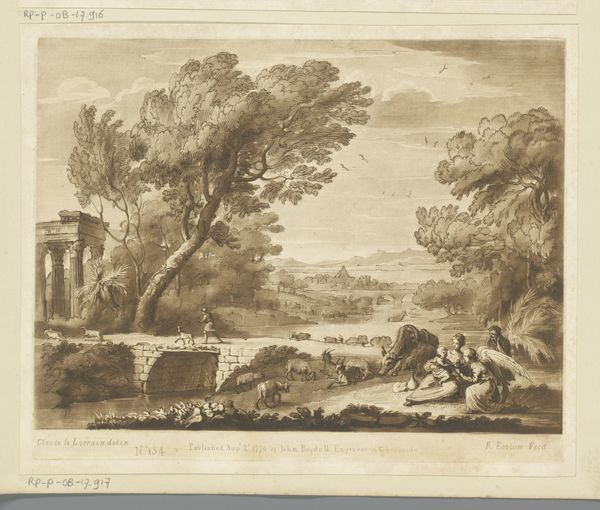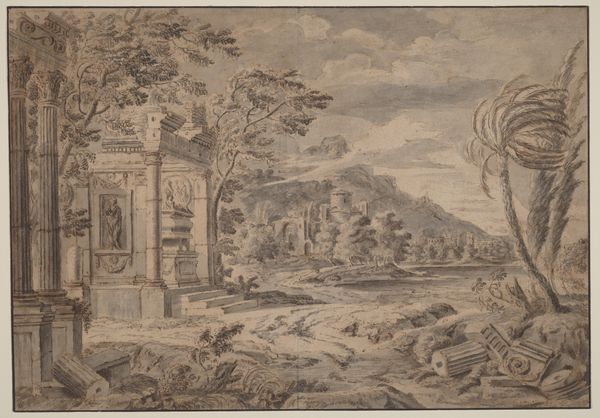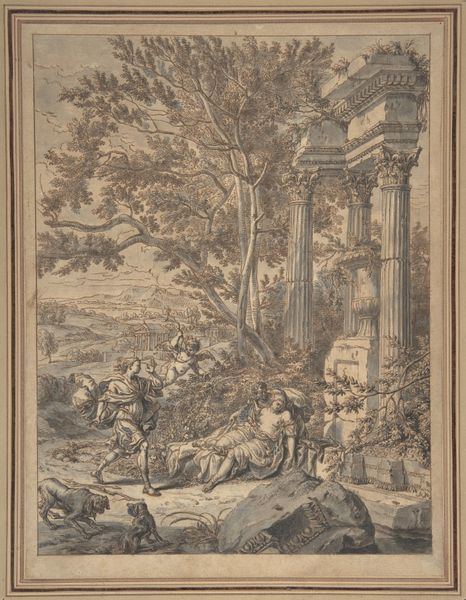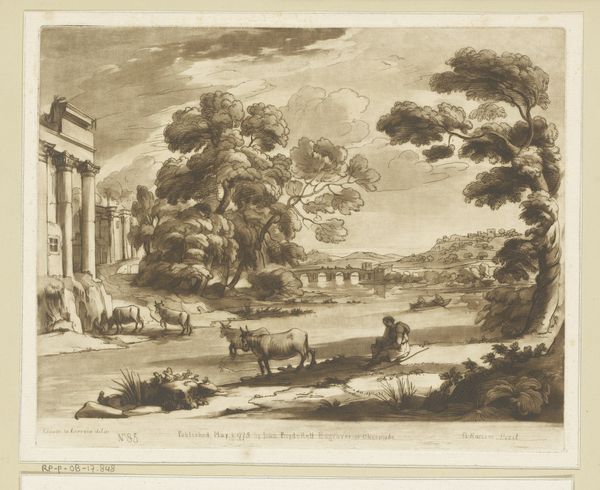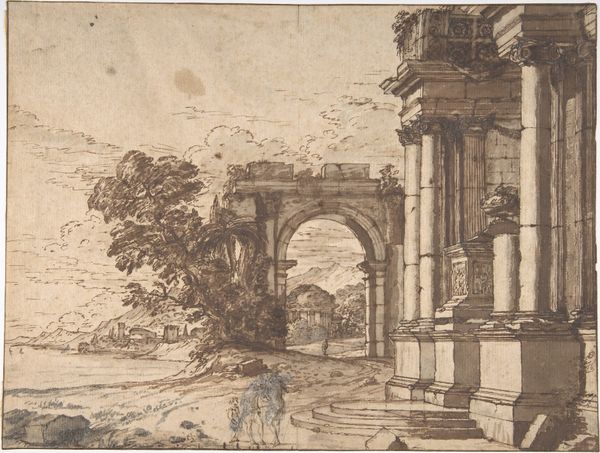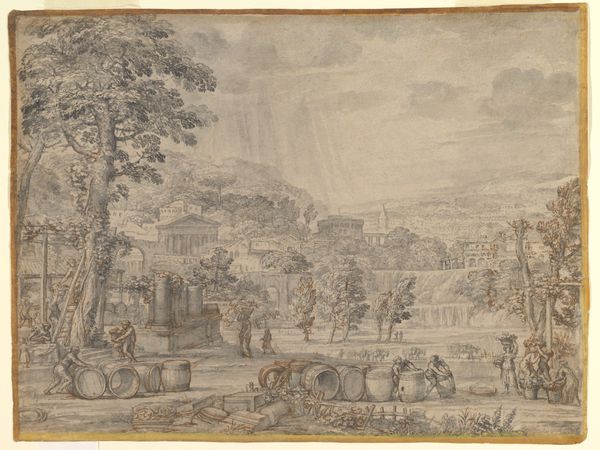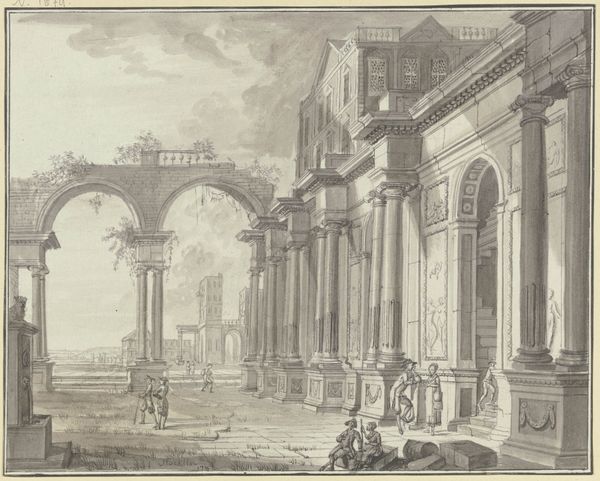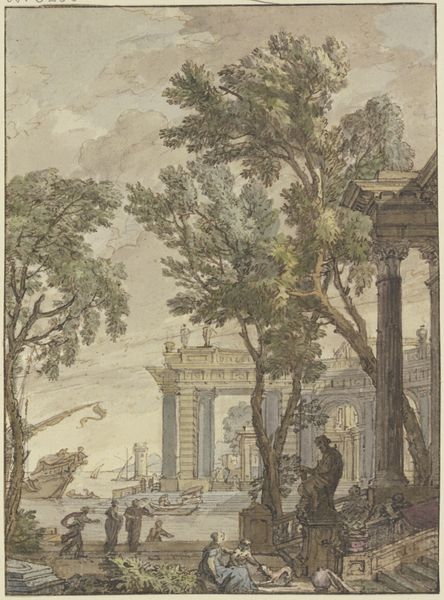
Dimensions: 12 × 17 1/2 in. (30.48 × 44.45 cm) (image)21 1/8 × 26 1/2 × 1 in. (53.66 × 67.31 × 2.54 cm) (outer frame)
Copyright: Public Domain
Giuseppe Zais made this ink wash drawing, "Ruins and Bridge," in 18th-century Italy, and it offers a glimpse into the era's fascination with the past and its relationship to the present. The image presents us with crumbling classical architecture, set against an idealized landscape and populated by contemporary figures. This juxtaposition speaks volumes about the cultural milieu of the time. The ruins serve as a romantic reminder of the grandeur of antiquity, a period that shaped Italian identity, while the presence of ordinary people suggests a continuity between past and present. This interest in classical antiquity was fueled by archaeological discoveries, such as Pompeii, but also an institutional fascination among Europe's art academies. Such institutions created a market for classically themed artwork to educate future generations of artists and aristocrats. To fully appreciate Zais's drawing, scholars consult period travelogues, architectural studies, and the records of art academies, uncovering the complex layers of meaning embedded within this seemingly simple landscape. Art like this reminds us that the meaning of art is always contingent on context.
Comments
minneapolisinstituteofart almost 2 years ago
⋮
It’s a beautiful day in, and the locals quietly enjoy it. The ruins of grand buildings from the past suggest an industry that no longer appears to be of much interest. There was a ready demand for such scenes in in and around Venice, where Giuseppe Zais painted and drew from about 1725-30 until his death in 1781. Though Zais may have sketched ruins and bridges that he saw in the countryside, here and in many other compositions, he seems to combine his memories of different places to create new fantasy locations, known as "capricci" (caprices), in which the artist presents theater of the imagination.
Join the conversation
Join millions of artists and users on Artera today and experience the ultimate creative platform.
